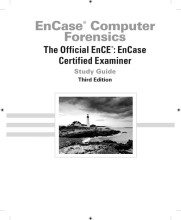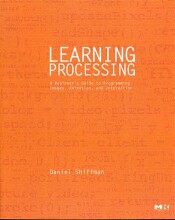Summary: Encase Computer Forensics -- The Official Ence Encase Certified Examiner Study Guide | 9780470901069 | Steve Bunting
- This + 400k other summaries
- A unique study and practice tool
- Never study anything twice again
- Get the grades you hope for
- 100% sure, 100% understanding
Read the summary and the most important questions on EnCase Computer Forensics -- The Official EnCE EnCase Certified Examiner Study Guide | 9780470901069 | Steve Bunting
-
1 Computer Hardware
-
1.6 Review Questions Chapter 1
This is a preview. There are 10 more flashcards available for chapter 1.6
Show more cards here -
What is the definition of a CPU?A. The physical computer case that contains all its internal componentsB. The computer’s internal hard driveC. A part of the computer whose function is to perform data processingD. A part of the computer that stores and manages memory
C. A CPU is the central processing unit, a microprocessor that performs
data processing, or interprets and executes instructions. -
What is the definition of POST?A. A set of computer sequences the operating system executes upon a proper shutdownB. A diagnostic test of the computer’s hardware and software for presence and operability during the boot sequence prior to running the operating systemC. A diagnostic test of the computer’s software for presence and operability during the boot sequence prior to running the operating systemD. A diagnostic test of the computer’s hardware for presence and operability during the boot sequence prior to running the operating system
D. POST (Power On Self-Test) is a diagnostic test of the computer’s hardware,
such as the motherboard, memory, CD-ROM drive, and so forth. POST does
not test the computer’s software -
Is the information stored on a computer’s ROM chip lost during a proper shutdown?A. YesB. No
B. Information contained on a ROM chip, read-only memory, is not lost after the computer has been shut down.
Read-only memory (ROM) is a type of non-volatile memory used incomputers and other electronic devices. Data stored in ROM can only be modified slowly, with difficulty, or not at all, so it is mainly used to storefirmware (software that is closely tied to specific hardware and unlikely to need frequent updates). -
Can information stored in the BIOS ever change?A. YesB. No
A. Although not very common, information stored in the BIOS can change,
such as when the BIOS needs to be upgraded to support new hardware. -
What is the purpose or function of a computer’s ROM chip?A. Long-term or permanent storage of information and instructionsB. Temporary storage area to run applicationsC. Permanent storage area for programs and filesD. A portable storage device
A. ROM (read-only memory) contains information about the computer, such as
hardware configuration. Unlike RAM, the information is not lost once power is
disconnected -
Information contained in RAM memory (system’s main memory), which is located on the motherboard, is _________.A. VolatileB. Nonvolatile
A. Information contained in RAM memory is considered volatile, which means that
the data is lost after the computer has been disconnected -
What is the maximum number of drive letters assigned to hard drive(s) partitions on a system?A. FourB. SixteenC. Twenty-fourD. Infinity
C. The answer is 24 drive letters (C–Z), with drive letters A and B reserved
for floppy drives. -
The smallest area on a drive that data can be written to is a _______ whilethe smallest area on a drive that a file can be written to is a _______.A. Bit and byteB. Sector and clusterC. Volume and driveD. Memory and disk
B. Data is written to sectors, and files are written to clusters. -
The size of a physical hard drive can be determined by which of the following?A. Multiplying the cylinder x head x sectorB. Multiplying the cylinder x head x sector x 512 bytesC. Multiplying the total LBA sectors times 512 bytesD. Adding the total size of partitionsE. Both B and C
E. Multiplying C/H/S gives the total amount of sectors in older systems if the
number of sectors per track is constant. When it’s not, total LBA sectors
give total sectors. Multiplying the total number of sectors from the
appropriate method times 512 bytes per sector gives the total number
of bytes for the physical drive. Adding up the total size of partitions does
not include areas outside the partitions, such as Unused Disk Area. -
12. Which is not considered an output device?A. MonitorB. PrinterC. CD-RW driveD. Speaker
C. A CD-RW (rewritable) drive is both an input and output device, as opposed to a CD drive, which only reads and inputs data to the computer system.
- Higher grades + faster learning
- Never study anything twice
- 100% sure, 100% understanding
Topics related to Summary: Encase Computer Forensics -- The Official Ence Encase Certified Examiner Study Guide
-
Computer Hardware - Review Questions Chapter w
-
First Response - Review Questions
-
Acquiring Digital Evidence - Review Questions
-
EnCase Concepts - Review Questions
-
EnCase Environment - Review Questions
-
Understanding, Searching for, and Bookmarking Data - Review Questions
-
File Signature Analysis and Hash Analysis - Review Questions
-
Windows Operating System Artifacts - Review Questions
-
Advanced EnCase - Review Questions Chapter (Advanced EnCase)































